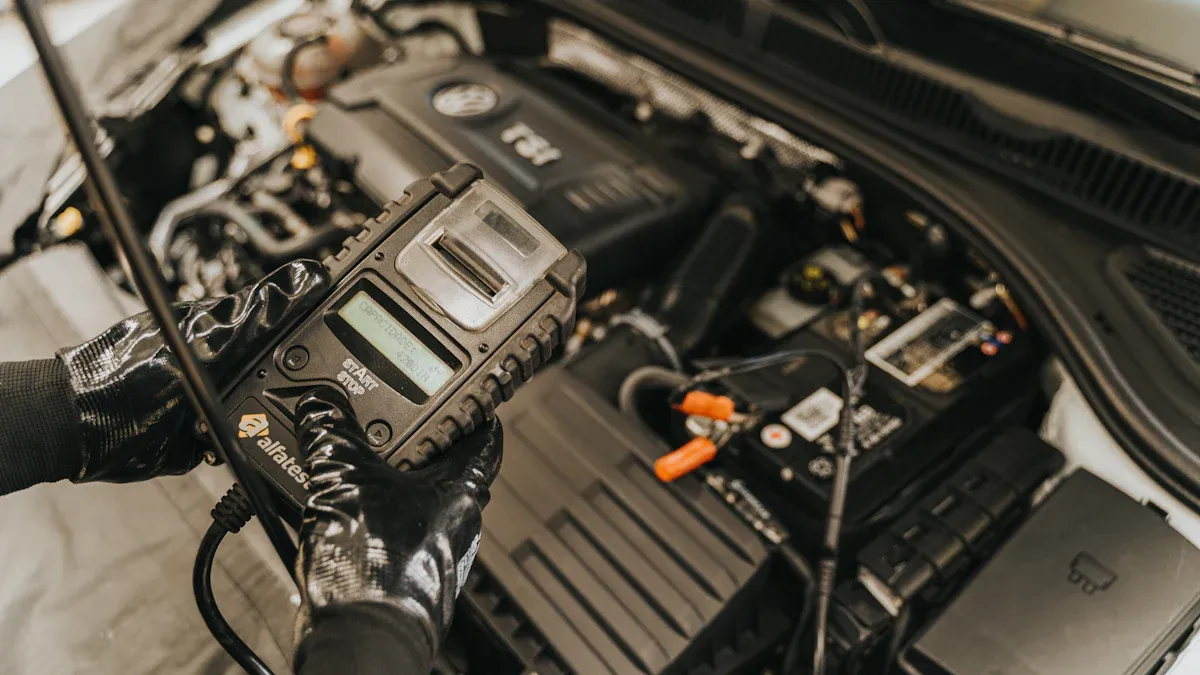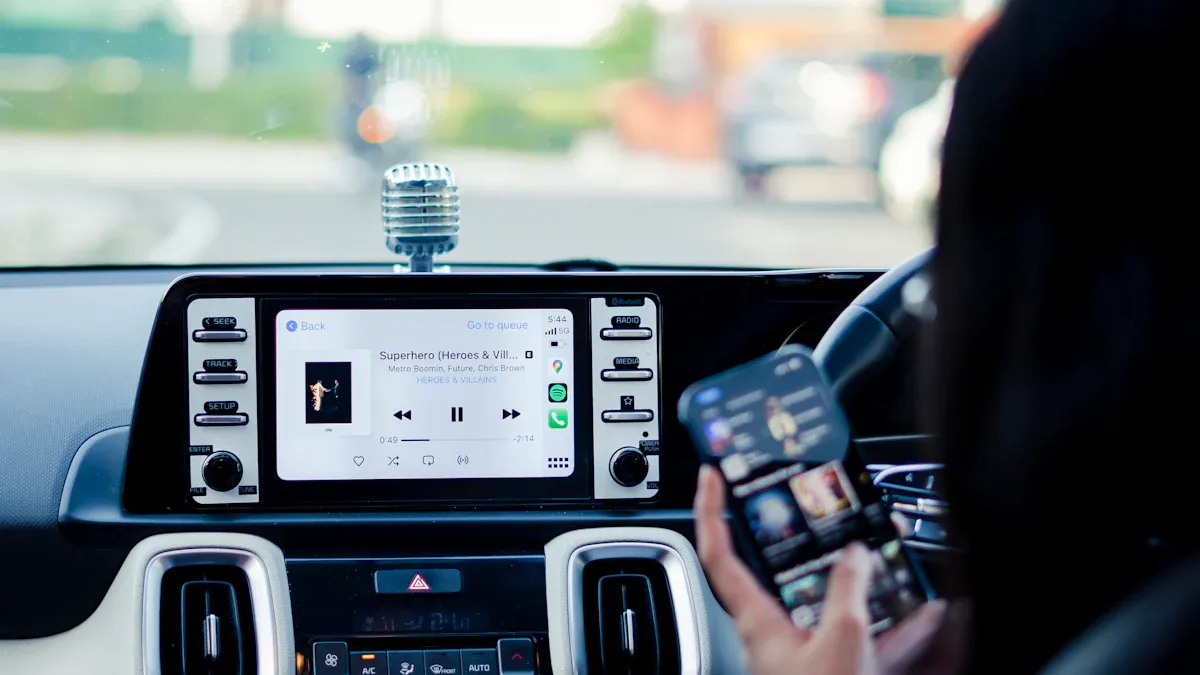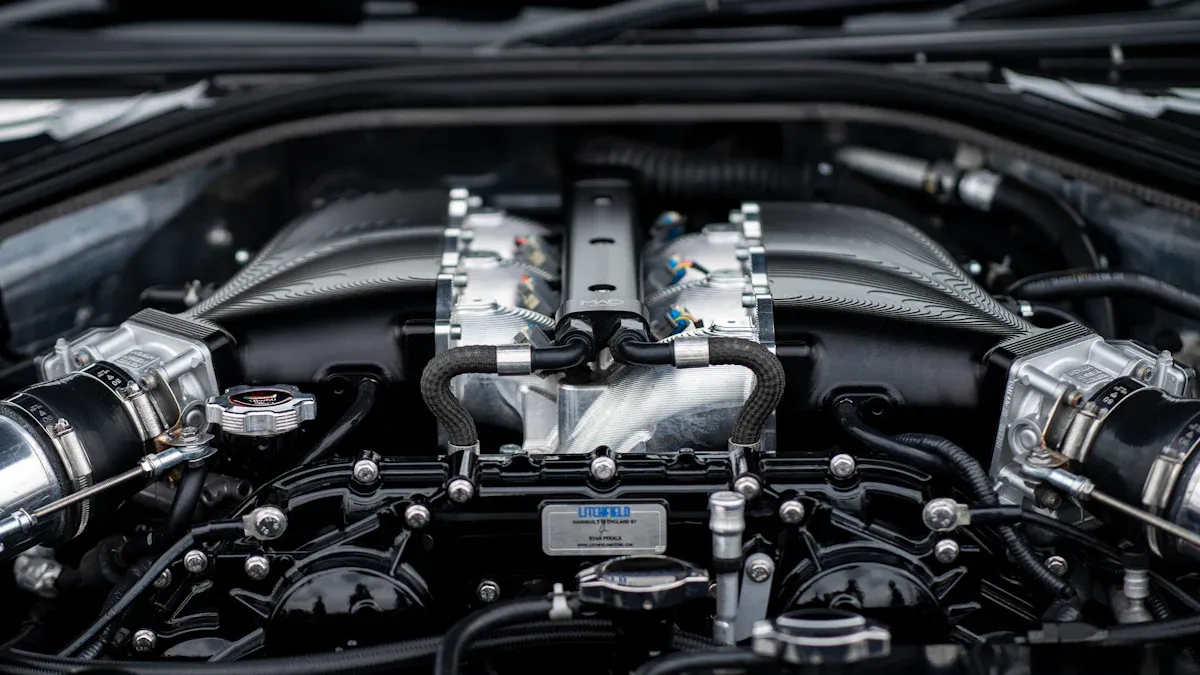How TCAN1042HGVDRQ1 Simplifies Automotive CAN Systems

The TCAN1042HGVDRQ1 makes car CAN systems simpler. It helps ECUs talk to each other easily. Its smart design makes cars work better and faster. The device saves energy, which is great for eco-friendly cars. It works well in systems like ADAS and EV battery management. The TCAN1042HGVDRQ1 fits perfectly into today’s car technologies. It handles the needs of new cars, keeping them reliable and efficient.
Key Takeaways
The TCAN1042HGVDRQ1 helps car parts talk to each other better.
It uses less power, which is great for electric cars and saves battery life.
This device follows strict car rules, making it safe and reliable for important systems like ADAS and EV batteries.
Its simple pin setup makes wiring easier and system designs better.
The TCAN1042HGVDRQ1 can send data fast, up to 5 Mbps, helping cars share information quickly.
Overview of the TCAN1042HGVDRQ1
Key Features and Specifications
The TCAN1042HGVDRQ1 has many features for car systems. It supports fast CAN communication, helping ECUs share data quickly. Its strong design reduces signal problems in vehicle networks. It works well in very hot or cold conditions. The device also has safety features like overheating shutdown and short-circuit protection. These features make it safe and long-lasting.
This device uses little power, which is great for electric cars. Its low standby power saves battery life. It also wakes up quickly, making systems respond faster. These qualities make the TCAN1042HGVDRQ1 perfect for today’s car systems.
Compliance with Automotive Standards
The TCAN1042HGVDRQ1 meets important car industry standards. These standards show it works well in vehicle networks. The table below lists its certifications:
Compliance Standard | Description |
|---|---|
AEC-Q100 (grade 1) | Approved for use in cars |
ISO 11898-2:2016 | Meets physical layer rules |
ISO 11898-5:2007 | Follows physical layer rules |
Functional Safety | Supports safe system designs |
These certifications prove it works in safety systems like ADAS and EV batteries.
Applications in Automotive Systems
The TCAN1042HGVDRQ1 is useful in many car systems. In body electronics, it helps with tasks like window controls. Powertrain systems use it for smooth engine and transmission work. Infotainment systems depend on it for good communication.
In advanced systems like ADAS, it helps sensors and controls share data fast. This improves safety and performance. It also helps manage EV batteries by monitoring them accurately. These uses show how important it is in modern cars.
Integration of the TCAN1042HGVDRQ1 into Automotive Systems

Pin Configurations and Signal Connections
The TCAN1042HGVDRQ1 has an easy pin setup for cars. It includes CANH and CANL pins for strong ECU communication. These pins connect directly to the CAN bus for smooth data sharing. VCC and GND pins provide power and grounding. RXD and TXD pins handle sending and receiving data. This simple design reduces wiring issues. It also works well for small PCB designs in cars.
Power Requirements and Voltage Levels
The TCAN1042HGVDRQ1 works within a safe voltage range.
Bus fault voltage: -70 to 70 V
Works with 3.3 V and 5 V MCUs
Bus fault protection: ±58 V (non-H) and ±70 V (H)
Undervoltage protection on VCC and VIO (V variants)
These features help it handle tough conditions like voltage changes. It works with both 3.3 V and 5 V MCUs, making it flexible. Its strong fault protection keeps CAN networks safe.
Compatibility with CAN Protocols
The TCAN1042HGVDRQ1 supports the CAN protocol for fast communication. It works with classical CAN and CAN FD systems. This allows quicker data sharing and better network performance. It fits modern car systems like ADAS and EV battery management. By following industry rules, it ensures reliable communication in car networks.
Benefits of the TCAN1042HGVDRQ1 in Automotive Applications

Better Safety and Reliability
The TCAN1042HGVDRQ1 makes car systems safer and more reliable. It has thermal shutdown to stop overheating in tough conditions. The device also protects against bus faults, handling up to ±70 V in H types. This keeps the system safe from electrical problems and damage. Its ESD protection, up to ±15 kV, guards parts during setup and use.
The device follows ISO 11898-2:2016 and ISO 11898-5:2007 rules. These rules ensure it works well in safety systems like ADAS and EV batteries. This makes it a trusted choice for important car systems.
Feature/Specification | Value/Description |
|---|---|
ESD Protection | Up to ±15 kV |
Bus Fault Protection | ±58 V (non-H variants), ±70 V (H variants) |
Thermal Shutdown Protection | Yes |
Junction Temperature Range | -55°C to 150°C |
Easier System Design
The TCAN1042HGVDRQ1 makes designing car systems simpler. Its easy pin setup reduces wiring problems, helping ECUs connect better. It works with both 3.3 V and 5 V MCUs, giving engineers more options.
Its low-power standby mode saves energy and has a wake-up feature. This is great for electric cars, as it saves battery life while keeping systems ready. By cutting power use and simplifying design, it helps engineers build better car systems.
Faster Performance in CAN Networks
The TCAN1042HGVDRQ1 works fast in high-speed CAN networks. It supports data speeds up to 5 Mbps, making ECU communication quick and reliable. Its 110 ns loop delay reduces waiting time for real-time data sharing.
It works with both CAN FD and classical CAN systems, fitting old and new networks. It also supports long-distance communication, perfect for big vehicles. These features improve systems like ADAS and infotainment, where fast data is key.
Feature | Description |
|---|---|
Data Rate | Up to 5 Mbps |
Typical Loop Delay | 110 ns |
Protocol Compatibility | CAN 2.0B, CAN FD |
Distance Capability | Suitable for long-distance communication |
Best Practices for Using the TCAN1042HGVDRQ1
Optimizing PCB Layout
A good PCB layout helps the TCAN1042HGVDRQ1 work well. Keep CANH and CANL lines short to avoid signal problems. Place decoupling capacitors near the VCC pin for steady power. Use continuous ground planes to block noise.
Tip: Make CAN bus traces even to keep signals clear and lower EMI.
Keep the CAN bus away from high-power parts to avoid noise. Add termination resistors at both ends of the CAN bus. This helps signals reflect properly and reduces errors.
Ensuring Proper Thermal Management
Managing heat is important for the TCAN1042HGVDRQ1, especially in hot areas. Allow airflow around the device to cool it down. Use thermal vias under the IC to move heat to the ground plane.
For very hot systems, add a heat sink or thermal pad. Check the junction temperature to keep it between -55°C and 150°C.
Note: Good heat management makes the device last longer and work better.
Testing and Debugging CAN Systems
Testing makes sure the TCAN1042HGVDRQ1 works in the CAN network. Use an oscilloscope to check for noise on CANH and CANL lines. Confirm termination resistors are 120 ohms.
During debugging, watch RXD and TXD pins for issues. Use CAN analyzers to check data and follow the CAN protocol. Regular testing during design helps avoid problems later.
The TCAN1042HGVDRQ1 improves car CAN systems by making communication easier. It has strong features like fault protection and low power use. These make it perfect for today’s cars. Engineers can add it easily to designs because of its simple pins. It also works well with CAN protocols. It is used in systems like ADAS and EV batteries, showing its flexibility. By using the TCAN1042HGVDRQ1, designers can build better, safer, and modern car systems.
Why is the TCAN1042HGVDRQ1 good for car systems?
The TCAN1042HGVDRQ1 follows strict car rules like AEC-Q100 and ISO 11898. It works well in very hot or cold weather. It also has features like fault protection and low power use. These make it great for systems like ADAS, EV batteries, and infotainment.
Can the TCAN1042HGVDRQ1 work with 3.3 V and 5 V microcontrollers?
Yes, the TCAN1042HGVDRQ1 works with both 3.3 V and 5 V microcontrollers. This makes it easy for engineers to use in different car designs. Its wide voltage range helps it work well in many systems.
How does the TCAN1042HGVDRQ1 make systems more reliable?
The device has features like thermal shutdown and ESD protection up to ±15 kV. It also protects against bus faults up to ±70 V. These features keep the system safe from electrical damage and make it last longer.
What is the fastest data speed of the TCAN1042HGVDRQ1?
The TCAN1042HGVDRQ1 can send data at speeds up to 5 Mbps. This fast speed helps systems share data quickly. It is perfect for real-time systems like ADAS and infotainment.
What are tips for using the TCAN1042HGVDRQ1?
Tip: Keep CANH and CANL lines short and the same length. Put decoupling capacitors near the VCC pin for steady power. Add termination resistors at both ends of the CAN bus to lower errors and improve signals.
See Also
Unveiling The Essential Automotive Features Of FREESCALE MCF5251CVM140
Three Key Innovations Of XCF01SVOG20C In Industrial Automation
A Deep Dive Into MC9S12DJ256MFUE Automotive Specifications
Three Transformative Impacts Of ATIC83E2 On Industrial Automation
SPC56 Microcontrollers: Simplified Solutions For Engine Control
CALL US DIRECTLY
(+86)755-82724686
RM2508,BlockA,JiaheHuaqiangBuilding,ShenNanMiddleRd,Futian District,Shenzhen,518031,CN
www.keepboomingtech.com sales@keepboomingtech.com
